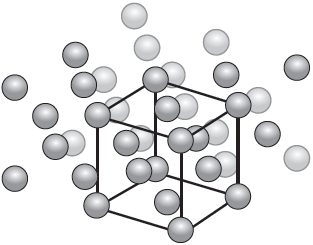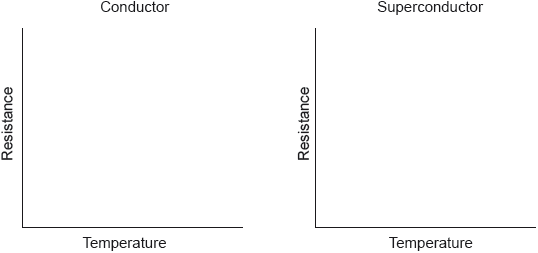| Date | November 2019 | Marks available | 2 | Reference code | 19N.3.hl.TZ0.4 |
| Level | HL | Paper | 3 | Time zone | TZ0 |
| Command term | State | Question number | 4 | Adapted from | N/A |
Question
Superconductors have no resistance below a critical temperature.
Outline how resistance to electric currents occurs in metals.
Suggest why the resistance of metals increases with temperature.
State two differences between Type I and Type II superconductors.
Markscheme
electrons collide with cations/positive ions ✔
increased vibrations of «lattice» ions ✔
increased «probability of» collisions «between electrons and cations» ✔
NOTE: Accept “increases lattice vibrations” for M1.
Any two of:
Type I have sharper transitions to superconductivity «than Type II» ✔
Type I have lower critical/operating temperatures «than Type II» ✔
Type I have lower critical magnetic field «strength than Type II» ✔
Type I carry lower currents «than Type II» ✔
Type I are «pure» metals/metalloids AND Type II are alloys/metal oxide ceramics/perovskites/metallic compounds ✔
Type II exist in a mixed state/are partly permeable to the magnetic field AND Type I do not/are not ✔



